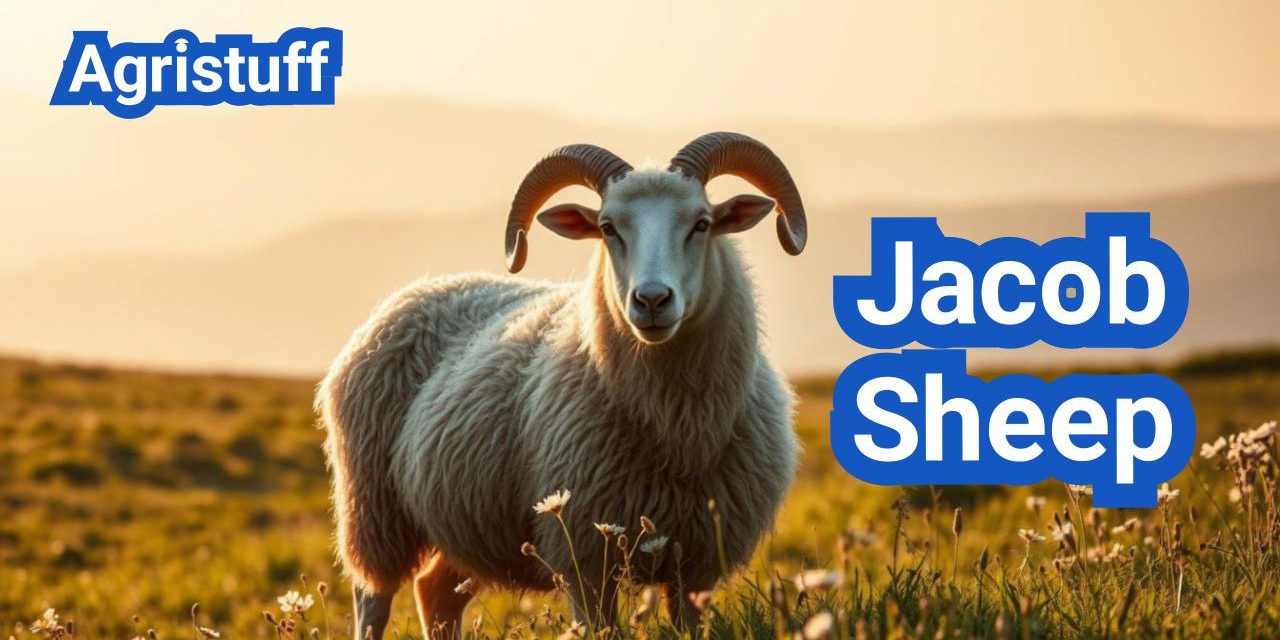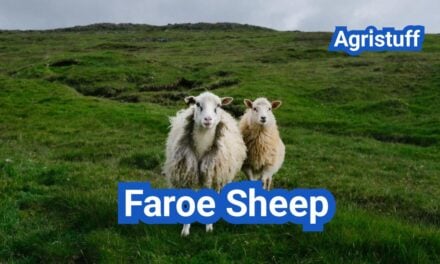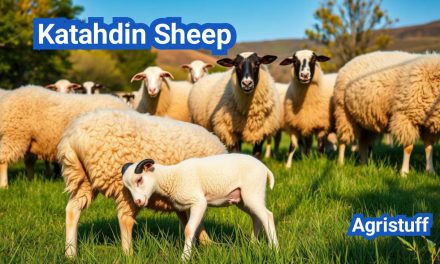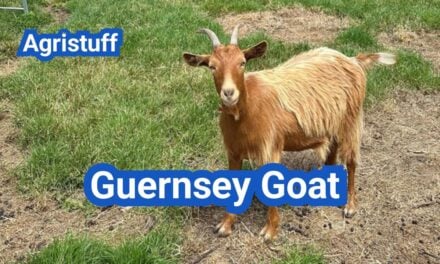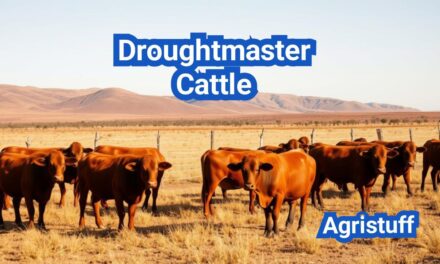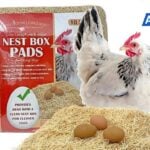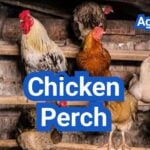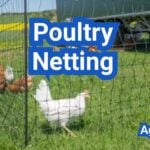The Jacob Sheep is an ancient breed known for its striking appearance and unique characteristics. This multi-horned heritage breed has been prized for its friendly nature and hardy constitution, making it a popular choice for smallholders and hobby farmers.
The heritage sheep breed status of the Jacob Sheep is a testament to its rich history and cultural significance. With its piebald coats and impressive multi-horned appearance, this rare breed is a standout among other sheep breeds.
Key Takeaways
- The Jacob Sheep is a rare and ancient breed.
- It is known for its multi-horned appearance and piebald coats.
- This heritage breed is prized for its friendly nature and hardy constitution.
- The Jacob Sheep is a popular choice for smallholders and hobby farmers.
- Its heritage status reflects its rich history and cultural significance.
The Distinctive Heritage of Jacob Sheep
The Jacob Sheep breed boasts a rich and distinctive heritage, steeped in history and biblical lore. Their unique characteristics and historical significance have made them a subject of interest among livestock enthusiasts and historians alike.
Historical Significance and Biblical Connections
Jacob Sheep have a long history that dates back thousands of years to the Middle East. Their name is derived from the biblical figure Jacob, who is mentioned in the Book of Genesis as having flocks of speckled and spotted sheep. This biblical connection has contributed to their historical significance and cultural importance.
The historical significance of Jacob Sheep is not limited to their biblical references. They have also been valued for their unique fleece and meat production qualities. Their ability to thrive in various environments has made them a versatile breed.
Modern Status as a Conservation Breed
In modern times, Jacob Sheep are considered a conservation breed due to their relatively rare status. Organizations such as The Livestock Conservancy play a crucial role in preserving the breed by promoting their unique characteristics and supporting breeders.
The conservation status of Jacob Sheep is critical due to their limited numbers. Efforts to preserve the breed include registration programs, breeding initiatives, and educational campaigns to raise awareness about the importance of conserving heritage sheep breeds.
| Conservation Status | Description | Organizations Involved |
|---|---|---|
| Endangered | Jacob Sheep are considered a rare breed with limited numbers. | The Livestock Conservancy |
| Conservation Efforts | Registration programs, breeding initiatives, and educational campaigns. | Breed Associations, Conservation Organizations |
By understanding the historical significance and modern conservation status of Jacob Sheep, breeders and enthusiasts can appreciate the importance of preserving this unique heritage breed.
Origin and History of the Breed

The history of Jacob Sheep is a tale of migration, adaptation, and selective breeding. This heritage breed has a rich and complex past that reflects the cultural, agricultural, and economic contexts of various times and places.
Ancient Origins and Migration Patterns
The exact origin of Jacob Sheep is not well-documented, but it is believed that they have their roots in the ancient Middle East or Mediterranean regions. Some theories suggest that they were present in biblical times, with references to multi-horned sheep in ancient texts.
As trade and migration occurred, these sheep were brought to various parts of Europe, where they were selectively bred for their distinctive characteristics, including their multi-horned trait and piebald coloration.
Introduction to North America
Jacob Sheep were introduced to North America by early European settlers, who brought with them their agricultural practices and livestock. The breed was valued for its hardiness, unique appearance, and the quality of its wool.
By the 17th and 18th centuries, Jacob Sheep had become established in North America, particularly in areas with significant European settlement. They were often kept on small farms and homesteads, where their multi-horned characteristic made them a novelty.
The breed’s popularity waxed and waned over the centuries, but it maintained a dedicated following among farmers and breeders who appreciated its unique qualities and historical significance.
- Jacob Sheep were kept in stately homes and parklands as ornamental sheep.
- Their introduction to North America was part of a broader pattern of livestock introduction by European settlers.
- The breed’s hardiness and unique appearance made it popular among early American farmers.
Jacob Sheep Characteristics and Identification
Jacob Sheep are renowned for their striking appearance, which includes a unique piebald coloration pattern. This distinctive breed is easily recognizable due to its characteristic fleece and horned features.
Piebald Coloration Pattern
The Jacob Sheep’s coat is one of its most distinguishing features, typically displaying a piebald pattern. This pattern is characterized by irregular patches of color on a white background, usually black, but can also be tan or brown in some cases. The piebald coloration is a result of genetic factors that influence the distribution of pigment in the fleece.
Size and Body Structure
Jacob Sheep are generally medium-sized animals. Ewes typically weigh between 100 and 150 pounds, while rams can weigh up to 200 pounds. They have a compact, athletic body with a deep chest and well-sprung ribs. Their legs are strong and well-proportioned to their body size, supporting their active nature.
| Category | Weight Range (lbs) | Height Range (inches) |
|---|---|---|
| Ewes | 100-150 | 24-28 |
| Rams | 150-200 | 28-32 |
Facial Features and Skull Structure
The facial features of Jacob Sheep are notable, particularly their skull structure, which can accommodate multiple horns in polycerate individuals. The breed can have two, four, or even six horns, with the two-horned configuration being the most common. Their face is typically white with colored markings around the eyes and muzzle, adding to their distinctive appearance.
“The unique horn configuration and facial markings of Jacob Sheep make them a standout among other sheep breeds, offering a visually appealing and genetically interesting animal for farmers and hobbyists.”
Overall, the Jacob Sheep’s combination of piebald coloration, robust body structure, and varied horn configurations make it a breed of significant interest and aesthetic appeal.
Understanding Multi-Horned Genetics

Jacob Sheep, known for their polycerate trait, offer a compelling case study in the genetics of multi-horned animals. The presence of multiple horns in Jacob Sheep is a result of a genetic trait that has been passed down through generations.
Polycerate Trait Explained
The term “polycerate” refers to the presence of multiple horns, a characteristic that is genetically determined. The genetics behind the polycerate trait involves a complex interplay of genes that influence horn development. Research suggests that the trait is inherited in an autosomal dominant pattern, meaning that a single copy of the gene is enough to express the trait.
“The polycerate condition is a result of genetic factors that affect the development of horns in sheep,” according to a study on the genetics of multi-horned sheep breeds.
Horn Configurations: 2, 4, and 6 Horns
Jacob Sheep can exhibit a variety of horn configurations, including two, four, and even six horns. The most common configurations are two or four horns, with six horns being less frequent. The specific configuration can vary significantly between individuals, even within the same flock.
- Two horns: The most common configuration, seen in many sheep breeds.
- Four horns: A characteristic feature of the Jacob Sheep breed.
- Six horns: A less common but notable configuration in Jacob Sheep.
Caring for Horned Sheep
Caring for horned sheep, particularly those with multiple horns like the Jacob Sheep, requires special attention to their health and well-being. Ensuring that their horns are properly managed is crucial to prevent injuries and infections.
Key considerations include:
- Regular inspection of the horns for signs of damage or infection.
- Providing adequate space to prevent horn-related injuries.
- Monitoring the overall health of the sheep to address any issues promptly.
By understanding the genetics behind the multi-horned trait and taking appropriate care measures, breeders can help ensure the health and well-being of their Jacob Sheep.
Jacob Sheep Wool: Harvesting and Uses
Jacob Sheep wool has gained popularity among hand spinners and crafters due to its natural color and softness. The unique characteristics of this wool make it highly sought after for various textile applications.
Unique Fleece Properties
The fleece of Jacob Sheep is known for its softness and crimp, making it ideal for crafting warm and durable textiles. The wool is also lightweight and has good insulation properties, suitable for creating clothing and home textiles.
- Softness and crimp for comfortable wear
- Lightweight with good insulation properties
- Natural color variations adding aesthetic value
Color Variations and Patterns
One of the distinctive features of Jacob Sheep wool is its piebald coloration, which results in a variety of natural colors and patterns. This natural diversity makes each fleece unique, offering a range of creative possibilities for crafters.
“The natural colors of Jacob Sheep wool range from pure white to deep black, with various shades of brown and gray in between, creating a rich palette for textile artists.”
Processing and Marketing Jacob Wool
The processing of Jacob Sheep wool involves several steps, from shearing to cleaning and carding. The wool can be marketed in various forms, including raw fleece, roving, or finished products like hats and scarves.
- Shearing: Typically done once or twice a year, depending on climate and fleece growth.
- Cleaning: Removing dirt and impurities to prepare the wool for processing.
- Carding: Aligning the fibers to create roving or yarn.
By understanding the unique properties and uses of Jacob Sheep wool, farmers and crafters can capitalize on the breed’s valuable fleece, creating a range of products that appeal to consumers looking for high-quality, natural textiles.
How to Set Up Your Farm for Jacob Sheep

Setting up a farm for Jacob Sheep involves several key considerations to ensure their health and productivity. Jacob Sheep are well-suited to outdoor living and can thrive in extensive grazing systems, making them a great choice for farms with suitable land.
Space Requirements and Fencing
Jacob Sheep require adequate space to roam and graze. A general rule of thumb is to provide at least 1-2 acres per sheep, depending on the quality of the pasture and the management practices in place. Fencing is also a critical aspect, as it needs to be sturdy enough to keep the sheep contained and protect them from predators. A 5-foot high woven wire fence is typically recommended.
Shelter and Basic Equipment Needs
Providing adequate shelter for Jacob Sheep is essential to protect them from extreme weather conditions. A simple three-sided shelter or a barn can suffice, ensuring it is well-ventilated and dry. Basic equipment needs include feeding troughs, water buckets, and handling facilities. It’s also important to have a hoof trimming chute and vaccination equipment on hand.
Selecting Your First Jacob Sheep
When selecting your first Jacob Sheep, it’s crucial to choose healthy animals from a reputable breeder. Look for sheep with good conformation, a strong constitution, and the characteristic multi-horned trait. Consider the age, sex, and quality of the fleece when making your selection. Purchasing a small group of sheep initially can help ensure a smooth transition to your farm.
By carefully planning your farm setup, including space, fencing, shelter, and equipment, and selecting the right Jacob Sheep, you can create a thriving and sustainable sheep farming operation.
Complete Feeding and Nutrition Guide

Ensuring Jacob Sheep receive a balanced diet is crucial for their overall health and productivity. Jacob Sheep are known to thrive on good-quality grass pasture and are excellent foragers, making pasture management a critical aspect of their nutritional care.
Pasture Management for Jacob Sheep
Effective pasture management is vital for maintaining the health and productivity of Jacob Sheep. These sheep are adept at foraging and can graze on a variety of grasses and plants. To manage pasture effectively:
- Ensure pastures are well-maintained and free from toxic plants.
- Implement rotational grazing to prevent overgrazing and maintain soil quality.
- Monitor pasture quality and adjust grazing patterns accordingly.
Supplemental Feed Requirements
While Jacob Sheep are efficient foragers, they may require supplemental feeding, especially during periods of poor pasture quality or when nutritional demands are high (e.g., during pregnancy or lactation). Supplemental feed should be nutrient-rich and tailored to the specific needs of the sheep.
The decision to provide supplemental feed should be based on factors such as:
- The quality and quantity of available pasture.
- The age, health, and reproductive status of the sheep.
- Seasonal variations in nutritional needs.
Seasonal Nutritional Considerations
Jacob Sheep have different nutritional needs across various seasons. For instance, during winter, when pasture is scarce, additional hay or silage may be necessary. Conversely, during spring, when pasture is lush, their dietary needs may be met through grazing alone. It’s essential to adjust their feeding regimen according to seasonal changes.
Some key seasonal considerations include:
- Providing extra nutrition during late pregnancy and early lactation.
- Adjusting feed according to the availability of pasture.
- Ensuring access to clean water throughout the year.
By understanding and addressing the nutritional needs of Jacob Sheep, farmers can ensure the health, productivity, and well-being of their flock. Proper feeding and nutrition are foundational to the successful management of Jacob Sheep.
Health Management Protocol

To ensure the longevity and health of Jacob Sheep, a structured health management protocol is necessary. This involves regular monitoring and preventative measures to maintain their overall well-being.
Preventative Care Schedule
A well-planned preventative care schedule is crucial for Jacob Sheep. This includes regular vaccinations, dental care, and hoof trimming. Vaccinations should be administered annually to protect against common diseases. Dental care involves regular checks for tooth alignment and health, while hoof trimming is necessary to prevent lameness.
Regular health checks are vital for early detection of potential health issues. Farmers should inspect their Jacob Sheep frequently for signs of illness or injury, such as changes in appetite, unusual behavior, or visible signs of disease.
Parasite Control Strategies
Parasite control is a significant aspect of health management for Jacob Sheep. Effective strategies include rotational grazing to reduce parasite loads in pastures, and the use of anti-parasitic medications when necessary. Monitoring for internal parasites, such as worms, is crucial, as they can significantly impact the health and productivity of the flock.
Addressing Breed-Specific Health Concerns
Jacob Sheep are generally robust, but like all breeds, they have specific health concerns. One of the primary concerns is the risk associated with their multi-horned trait. Proper care and management of their horns are essential to prevent injuries to the sheep and handlers. Additionally, their piebald coloration can sometimes be associated with certain health issues, although this is not unique to Jacob Sheep.
By implementing a comprehensive health management protocol, farmers can ensure the health and productivity of their Jacob Sheep. This not only improves the welfare of the animals but also enhances the overall sustainability of the farm.
Breeding and Lambing Success

Breeding and lambing Jacob Sheep requires careful planning and management to ensure the health and productivity of the flock. Effective strategies in these areas are crucial for the prosperity of any Jacob Sheep farm.
Breeding Season Management
Successful breeding season management involves several key factors, including the selection of healthy breeding stock, timing, and nutrition. Ensuring that ewes are in optimal condition before breeding is vital.
- Select rams with desirable traits and proven fertility.
- Plan the breeding season to achieve lambing at the most favorable time of year.
- Provide nutritional support to ewes before and during the breeding season.
Pregnancy and Lambing Care
Jacob Sheep are known for their strong maternal instincts and typically lamb with minimal assistance. However, proper care during pregnancy and lambing is essential.
Pregnancy Care: Monitor the health of pregnant ewes closely, providing adequate nutrition and regular veterinary check-ups.
Lambing Care: Ensure a clean and safe lambing environment. Monitor ewes closely during lambing to provide assistance if needed.
Raising Healthy Jacob Lambs
Raising healthy lambs involves providing the right nutrition, healthcare, and socialization. Key practices include:
- Ensuring lambs receive adequate colostrum and nutrition.
- Implementing a vaccination and parasite control program.
- Providing a safe and comfortable living environment.
By focusing on these areas, breeders can achieve breeding and lambing success, contributing to the overall health and productivity of their Jacob Sheep flock.
Utilizing Jacob Sheep as Dual-Purpose Livestock

Jacob Sheep are renowned for their versatility as dual-purpose livestock, providing both high-quality meat and valuable wool. This heritage breed offers farmers a unique opportunity to diversify their products and maximize their farm’s potential.
Meat Production Characteristics and Practices
Jacob Sheep are prized for their lean, flavorful meat, which has a fine texture. The breed’s meat production characteristics make it an attractive option for farmers looking to enter the specialty meat market.
Meat Production Benefits:
- Lean meat with a fine texture
- Flavorful and tender
- Suitable for specialty meat markets
| Meat Characteristic | Description | Benefit |
|---|---|---|
| Lean Content | Low fat percentage | Appeals to health-conscious consumers |
| Texture | Fine grain | Enhances tenderness and palatability |
| Flavor Profile | Rich and distinct | Commands premium prices in specialty markets |
Maximizing Wool Production Value
The wool of Jacob Sheep is highly valued for its natural colors and versatility. By focusing on quality and proper harvesting techniques, farmers can maximize the value of their wool products.
Wool Production Tips:
- Ensure proper nutrition for optimal fleece quality
- Implement regular shearing schedules
- Consider value-added processing for premium products
By leveraging both meat and wool production, farmers can diversify their income streams and enhance the overall profitability of their Jacob Sheep operations.
Conservation Status and How to Participate

The Jacob Sheep breed, known for its distinctive multi-horned trait, is currently under conservation priority due to its relatively low population numbers. As a heritage breed with significant historical and cultural value, conservation efforts are crucial for its survival.
Current Population Numbers and Challenges
The Livestock Conservancy has listed the North American population of Jacobs as a conservation priority. Current estimates indicate that while the breed has a dedicated following, its population remains relatively small compared to more common sheep breeds. This limited gene pool presents challenges for breeders aiming to maintain genetic diversity and avoid inbreeding.
Key challenges include:
- Limited genetic diversity
- Risk of inbreeding
- Need for coordinated breeding programs
Conservation Organizations and Programs
Several organizations are dedicated to the conservation of rare breeds like the Jacob Sheep. The Livestock Conservancy is a key player, working to preserve genetic diversity within the breed through various programs and initiatives.
“Conservation of heritage breeds is not just about preserving animals; it’s about maintaining cultural heritage and biodiversity.” – The Livestock Conservancy
These organizations often collaborate with breeders and farmers to implement effective conservation strategies, including breeding programs and genetic monitoring.
Getting Involved in Breed Preservation
Individuals can participate in Jacob Sheep conservation in several ways:
- Registering your flock with recognized breed associations to help track and manage the breed’s genetic diversity.
- Participating in breeding programs designed to enhance genetic diversity and reduce inbreeding.
- Supporting conservation organizations through donations or membership.
- Educating others about the importance of conserving heritage breeds like the Jacob Sheep.
By engaging in these activities, breeders and enthusiasts can contribute to the long-term conservation of the Jacob Sheep breed.
Jacob Sheep for Small Farms and Homesteads

For small-scale farmers and homesteaders, Jacob sheep offer a unique combination of hardiness and versatility. Their friendly nature and robust health make them an excellent choice for those looking to diversify their farm or homestead with multi-horned, heritage livestock.
Benefits for Small-Scale Operations
Jacob sheep are particularly beneficial for small-scale operations due to their low maintenance requirements and adaptability to various environments. They are known for their ability to thrive on minimal supplemental feed, making them a cost-effective choice. Additionally, their wool and meat production provide dual revenue streams for farmers.
- Hardiness and resistance to disease
- Efficient foraging capabilities
- Unique wool and meat production
- Potential for value-added products
Integration with Other Livestock
Jacob sheep can be easily integrated with other livestock on small farms and homesteads. Their calm demeanor makes them compatible with a variety of other animals, including cattle, goats, and poultry. This integration can enhance the overall biodiversity of the farm, contributing to a more sustainable and resilient agricultural system.
Some benefits of integrating Jacob sheep with other livestock include:
- Improved pasture management through mixed grazing
- Enhanced farm biodiversity
- Potential for shared infrastructure, such as fencing and shelter
By incorporating Jacob sheep into their operations, small farmers and homesteaders can not only diversify their products but also contribute to the conservation of this unique heritage breed.
Joining the Jacob Sheep Community
Becoming part of the Jacob Sheep community opens up a world of resources and networking opportunities for breeders and enthusiasts alike. This community is built around a shared passion for preserving and promoting the unique heritage of Jacob Sheep.
Breed Associations and Resources
The Jacob Sheep Breeders Association is a key organization that supports breeders through various resources, including breed standards, breeding advice, and market information. By joining such associations, members can stay updated on the latest developments and best practices in Jacob Sheep husbandry.
Key Benefits of Joining Breed Associations:
- Access to breed-specific knowledge and expertise
- Networking opportunities with experienced breeders
- Participation in breed conservation efforts
- Updates on market trends and demands
| Association | Resources Offered | Membership Benefits |
|---|---|---|
| Jacob Sheep Breeders Association | Breed standards, breeding guides, market analysis | Networking, access to exclusive events, breed conservation updates |
| American Jacob Sheep Association | Pedigree registration, breed history, educational materials | Access to breeder directory, event participation, promotional support |
Shows, Events, and Networking Opportunities
Participating in shows, events, and networking opportunities is an excellent way to engage with the Jacob Sheep community. These events provide a platform for breeders to showcase their animals, share knowledge, and learn from others in the field.
Types of Events:
- Breed shows and competitions
- Conservation and breeding seminars
- Workshops on sheep husbandry and wool production
- Annual meetings and conferences
By engaging with the Jacob Sheep community through breed associations, shows, and events, individuals can enhance their knowledge, improve their breeding programs, and contribute to the conservation of this unique heritage breed.
Marketing Your Jacob Sheep Products
Jacob Sheep farmers can capitalize on the growing demand for specialty wool and heritage meat by implementing effective marketing techniques. The unique characteristics of Jacob Sheep products, such as their multi-horned heritage and high-quality wool, provide a strong foundation for marketing efforts.
Specialty Wool Markets and Value-Added Products
The wool from Jacob Sheep is highly prized for its softness, warmth, and unique color patterns. To capitalize on this, farmers can explore specialty wool markets that value these characteristics. Creating value-added products such as hand-knit garments, hats, and scarves can significantly increase the profitability of the wool.
Farmers can also consider partnering with local artisans or textile manufacturers to create unique products that showcase the quality of Jacob Sheep wool. Online marketplaces and local craft fairs can serve as effective channels for selling these products.
Heritage Meat Marketing Strategies
Jacob Sheep meat is marketed as a heritage product, appealing to consumers looking for unique and sustainable meat options. Highlighting the breed’s historical significance and the humane, sustainable farming practices used can attract premium prices.
Effective marketing strategies include labeling products with the breed’s heritage, promoting the nutritional benefits of the meat, and using social media to tell the story of the farm and the animals. Direct-to-consumer sales through farmers’ markets and online platforms can also help in building a loyal customer base.
Breeding Stock Sales and Promotion
For breeders, marketing breeding stock is crucial for expanding their business. Highlighting the genetic diversity, hardiness, and unique characteristics of Jacob Sheep can attract other breeders. Participating in agricultural shows and breed-specific events provides opportunities to showcase the quality of the breeding stock.
Online platforms and breed association websites can also be used to advertise breeding stock for sale. Providing detailed information about the animals, including their pedigree, health records, and genetic testing results, can help build trust with potential buyers.
The Enduring Appeal of Jacob Sheep
The Jacob Sheep breed has captivated farmers and hobbyists alike with its unique appearance and versatile uses. As a heritage breed, Jacob Sheep offer a range of benefits, including their high-quality wool, lean meat, and distinctive multi-horned characteristic.
The breed’s hardiness and adaptability make it an attractive choice for small farms and homesteads. Their rare breed status and conservation efforts have also sparked interest among those looking to preserve genetic diversity in livestock.
Jacob Sheep characteristics, such as their piebald coloration and polycerate trait, set them apart from other breeds. The breed’s enduring appeal lies in its ability to provide a unique product, whether it be specialty wool or heritage meat, while also serving as a conservation breed.
As the demand for sustainable and unique agricultural products grows, the Jacob Sheep breed is well-positioned to meet this demand. Its enduring appeal as a rare and heritage breed ensures that it will continue to be a popular choice among farmers and consumers alike.
FAQ
What is the origin of the Jacob Sheep breed?
The Jacob Sheep breed has a rich and complex history, with its origins tracing back to ancient times. The breed is believed to have originated in the Middle East or Mediterranean region.
What are the distinctive characteristics of Jacob Sheep?
Jacob Sheep are known for their unique piebald coloration, multi-horned trait, and hardy constitution. They are a small to medium-sized breed with a friendly and docile nature.
What is the significance of the multi-horned trait in Jacob Sheep?
The multi-horned trait, also known as the polycerate trait, is a unique characteristic of Jacob Sheep. The breed can have 2, 4, or 6 horns, and this trait is a result of genetic variation.
How do I care for horned Jacob Sheep?
Caring for horned Jacob Sheep requires specific knowledge and practices to ensure their health and well-being. Regular checks for horn health and proper nutrition are essential.
What are the uses of Jacob Sheep wool?
Jacob Sheep wool is highly valued for its unique fleece properties, color variations, and patterns. The wool can be used to create a range of products, including clothing, hats, and scarves.
How do I set up a farm for Jacob Sheep?
Setting up a farm for Jacob Sheep requires careful planning, including space requirements, fencing, shelter, and equipment needs. Selecting the right Jacob Sheep for your farm is also crucial.
What are the nutritional requirements of Jacob Sheep?
Jacob Sheep require a balanced diet that includes high-quality pasture, hay, and grains. Seasonal nutritional considerations are also important to ensure their health and productivity.
How do I manage the health of my Jacob Sheep?
Managing the health of Jacob Sheep requires a comprehensive health management protocol, including preventative care, parasite control, and addressing breed-specific health concerns.
Can Jacob Sheep be used for meat production?
Yes, Jacob Sheep can be used for meat production, and they are a dual-purpose breed, providing both wool and meat.
How can I get involved in Jacob Sheep conservation?
Getting involved in Jacob Sheep conservation can be done through breed associations, conservation organizations, and programs. Supporting breeders and conservation efforts is crucial for the long-term survival of the breed.
What are the benefits of raising Jacob Sheep on small farms and homesteads?
Jacob Sheep are a hardy and versatile breed, making them an excellent choice for small-scale operations. They can be integrated with other livestock and provide a range of benefits, including wool and meat production.
How can I market my Jacob Sheep products?
Marketing Jacob Sheep products can be done through specialty wool markets, heritage meat marketing strategies, and breeding stock sales. Creating value-added products and promoting the unique characteristics of Jacob Sheep can also help to increase sales.
Conclusion of: Jacob Sheep
The Jacob Sheep is a unique and visually striking heritage breed, instantly recognizable by its piebald fleece and multi-horned head. In this guide, we delve into its history, characteristics, uses, husbandry, and how it thrives in North America—especially in the USA.
Origins and History of Jacob Sheep
The Jacob Sheep traces its roots to the British Isles, where spotted polycerate (multi-horned) sheep were recorded as early as the 17th century. Legend ties them to the Biblical story of Jacob, who bred speckled livestock, though genetic studies link the breed to sheep from Africa and southwest Asia. They may even share deeper ancient origins dating back thousands of years as a primitive breed.
Hundreds of years ago, Jacob Sheep were ornamental “park sheep” on English estates. Their name arose in the 20th century, when breed societies formed in the UK (1969) and North America (mid-1980s). Imports into the US began in the early 1900s, with more structured breeding from the 1960s onwards, resulting in the formation of the Jacob Sheep Breeders Association in 1988–89. 24
Distinctive Appearance of Jacob Sheep
From afar, a Jacob Sheep stands out with its bold black-and-white piebald coat and pronounced horns. Typically, the fleece is around 60% white with 40% dark patches—sometimes even lilac in color.
Both sexes carry horns: rams often have two or four (occasionally six), while ewes bear smaller horns. The iconic four-horned ram displays two vertical central horns (up to two feet long) plus two side horns curving outward. Horns are usually black (rarely striped), and purebreds must be horned—polled animals are disqualified.
Their conformation is primitive and goat-like: a long-framed body, straight back, slender legs with black hooves, and a tail reaching near the hocks. The slender triangular head is typically “badger-faced,” with dark cheeks and muzzle set against a white blaze.
Wool Characteristics and Fleece Quality
The Jacob Sheep fleece is prized among artisan spinners and weavers. It’s medium-grade wool, single-coated, with staple lengths of 3–7 inches and fleece weights around 3–6 pounds. Fiber diameter ranges from 25–35 microns with moderate crimp and lustre.
Importantly, black and white fibers may grow at different lengths; excessive variation (“quilted fleece”) is undesirable. Jacob wool is low in lanolin, open in texture, and ideal for producing naturally mottled slate or pewter yarns by blending fibers. Annual shearing usually occurs in spring, yielding wool and hides with market value.
Meat, Skins, and Practical Uses of Jacob Sheep
Though primarily raised for wool and ornamental value, Jacob Sheep also offer lean, flavorful meat. They produce lean carcasses with little external fat and efficient yields. Nutritional analyses show Jacob meat low in fat and cholesterol, rich in high-quality protein—only rabbit and venison are leaner.
Their pelts, decorated with spotted patterns, are valued for leather and craft uses. In small homestead settings, they may even serve as guard animals: their alert nature and horns can deter predators or intruders.
Husbandry and Temperament
The Jacob Sheep is a hardy, unimproved breed—ideal for low-input farming. They tolerate heat, cold, and poor forage, requiring minimal supplementation. Jacobs resist hoof issues and internal parasites, and don’t flock tightly, making them easier to manage in rotational grazing.
They lamb readily, typically bearing 1–2 lambs (occasionally triplets), and maternal instincts are strong. First-time ewes often deliver singles, though twins and triplets are common in later years.
Their primitive build—with goat-like agility and curiosity—makes them engaging and personable in small flocks. While skittish by nature, Jacobs become docile with routine handling.
Conservation and Heritage Status
The Jacob Sheep is classified as a heritage breed. In the UK, it was listed as “Category 6: Other UK Native Breeds” by the Rare Breeds Survival Trust (RBST) in 2017. Population globally is modest, with breeding flocks in the UK, USA, Czech Republic, Germany, and the Netherlands.
In North America, Jacobs are gaining popularity among fiber artisans, homesteaders, and smallholders. Registries like the Jacob Sheep Breeders Association and Jacob Sheep Conservancy actively promote genetic diversity and heritage traits. Conservation organizations in the U.S. also help support various rare breeds—including the Jacob—through breed preservation programs.
Breeding Standards and Polycerate Features
Breed standards for Jacob Sheep emphasize their multi-horn appearance, balanced markings, color distribution, and overall conformation. Ideal traits include:
- 2–4 strong horns (balanced and well-attached); 6 horns are rare but acceptable
- Piebald markings: Approximately 60% white with black/lilac patches, badger-faced head, spotted legs and hooves
- Heavy fleece: 3–6 pounds, staple 3–7 inches, fiber 25–35 microns
- Body frame: Rams 120–180 lb, ewes 80–120 lb, straight back, long frame, black hooves
Polled or weak-horned sheep are disqualified as non-purebred. Scurs (incomplete horns) in ewes or horns below standard are considered faults.
Health and Genetic Considerations
As a primitive breed with minimal selection, Jacob Sheep retain some genetic variation—and associated health quirks. Multi-horned breeds sometimes exhibit congenital split-eyelid issues. A rare skeletal anomaly (occipital condylar dysplasia) was detected in a couple of lambs.
Notably, in 2008, researchers found Tay-Sachs-like hexosaminidase A deficiency in some U.S. Jacob lambs. Testing uncovered around 50 carriers. New gene therapies for humans have been informed by this finding. Responsible breeders now monitor for this trait.
Ideal Settings for Raising Jacob Sheep in the USA
For American farmers and homesteaders, Jacob Sheep thrive in varied North American climates. Here’s why:
- Low maintenance: Hardy, parasite resistant, requiring minimal shelter and supplementation
- Fiber income: Wool and hides can be sold to artisans and tanneries
- Heritage appeal: Market interest in heritage breeds supports direct-to-consumer sales
- Meat niche: Lean lamb appeals to health-conscious eaters
- Adaptability: They cope well with heat, cold, and variable forage
To maintain breed quality:
- Adhere to horn and color breed standards
- Utilize genetic testing where possible
- Keep good records of lineage and traits
Registries such as the Jacob Sheep Breeders Association can help match quality stock.
Incorporating Jacob Sheep Into Your Small Farm
If you’re considering Jacob Sheep, here’s a quick starter guide:
- Flock size: Ideal for small flocks (5–20)
- Infrastructure: Basic predator-proof fencing and open shelter
- Feeding: Pasture plus hay; minimal grains
- Breeding cycle: Autumn mating, spring lambing
- Shearing: Annually in spring; fleece can be sold or used on-farm
- Record-keeping: Track horns, markings, weights, and lineage
Despite their ancient roots, Jacob Sheep are relatively easy to manage, making them a favorite among new and experienced farmers alike.
Final Thought
The Jacob Sheep is a captivating blend of history, aesthetics, and practicality. With their iconic multi-horned profile, attractive piebald fleece, and hardy disposition, they embody what many seek in a heritage breed. Whether you’re drawn to spinning natural fiber, raising lean lamb, or preserving a living link to pastoral tradition, the Jacob Sheep offers rich rewards.
For further reading on heritage livestock conservation, visit The Livestock Conservancy.

